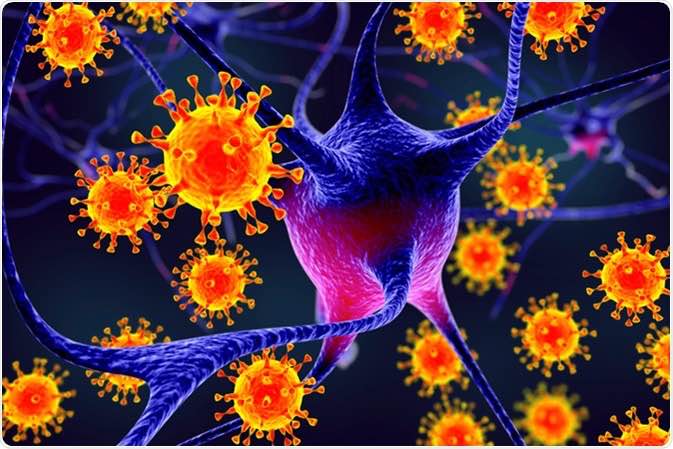Investigators at the Yale School of Medicine have recently discovered how the SARS-CoV-2 virus can directly infect the central nervous system. The findings have also begun to help give a more thorough understanding of how the virus impacts cells in the brain, potentially aiding in the development of treatments for different types of neurological symptoms that are associated with the coronavirus disease 2019 (COVID-19).
Published in the Journal of Experimental Medicine, the study was undertaken in an attempt to answer remaining questions, like whether the virus can infect neurons or other types of brain cells. Investigators used human brain organoids, which are miniature 3D organs that are grown in a lab from human stem cells, to analyze the ability of the SARS-CoV-2 virus to invade the cells.
“Understanding the full extent of viral invasion is crucial to treating patients, as we begin to try to figure out the long-term consequences of COVID-19, many of which are predicted to involve the central nervous system,” Akiko Iwasaki, a professor at Yale School of Medicine said.
The findings demonstrated that the virus infected the neurons in the organoids and used them as a means for their own replication. The virus also seemed to replicate itself by boosting the infected cells metabolism, while the surrounding, uninfected neurons died due to a reduction in oxygen supply.
Additionally, the investigators behind the study analyzed brains of 3 patients who succumbed to COVID-19, and detected the virus in the cortical neurons of 1 of them. The infected regions of the brains were associated with ischemic infarcts, where a decrease in blood supply can cause localized damage to tissue and cell death.
“Our study clearly demonstrates that neurons can become a target of SARS-CoV-2 infection, with devastating consequences of localized ischemia in the brain and cell death,” Kaya Bilguvar, co-senior author on the study said. “Our results suggest that neurologic symptoms associated with COVID-19 may be related to these consequences, and may help guide rational approaches to the treatment of COVID-19 patients with neuronal disorders.”
































